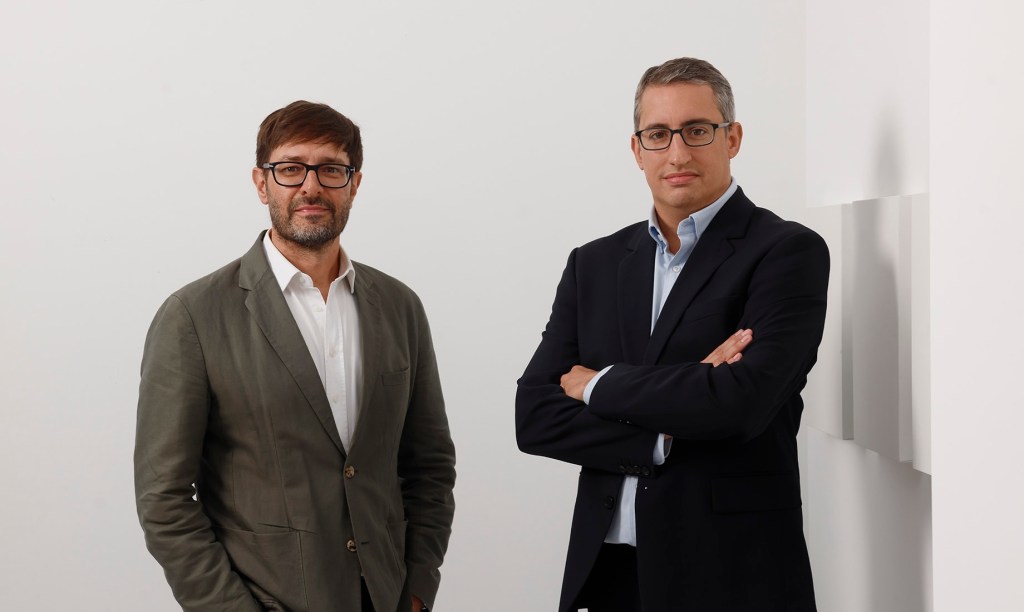After 35 years in business, New York’s Kasmin gallery is closing its doors. The gallery will now launch a planned transition into a new venture called Olney Gleason, a gallery led by Nick Olney, Kasmin’s president since 2020, and Eric Gleason, a senior director since 2013.
Both men have deep roots at Kasmin. Olney joined in 2007, after six years at Berggruen Gallery in San Francisco. Gleason, who began his career at Marlborough, met Olney in 2010 and officially joined the gallery in 2013.
“Kasmin is a ship that’s come into port after a long and meaningful voyage,” Olney told ARTnews. “Olney Gleason is a different vessel, launching from the same harbor, but on a new course.”
Related Articles

That course is one Paul Kasmin helped chart. Before his death in 2020, the founder had discussed with Olney what a transition into what would become Olney Gleason might look like. The plan was always there. What wasn’t fixed was the timing.
“We had those conversations while Paul was still alive,” Olney said. “What we’re doing now aligns with those early discussions, and the estate is fully supportive.”
“While we’re sad that this chapter is coming to a close, I’m grateful to Nick, Eric, and the entire team for all they’ve done to build an amazing organization alongside Paul, and for their dedication to honoring his legacy over the past five years,” Olivia Kasmin, one of Paul’s daughters, said in a statement to ARTnews. “I’m confident that Paul would be happy that the spirit of the gallery will continue. We wish Nick and Eric all the best in this exciting new chapter.”
Born in London in 1960, Paul Kasmin grew up surrounded by artists connected to his father, legendary dealer John Kasmin. He opened his own gallery in SoHo in 1989 before relocating to Chelsea a decade lader, eventually establishing three exhibition spaces, including the main gallery at 509 West 27th Street. In 2018, the gallery was renamed simply Kasmin.
Its roster bridged generations and disciplines with a program that embraced both Surrealist masters and contemporary sculptors alike. Early Kasmin artists included Walton Ford, Jamie Nares, and Elliot Puckette. They continued to remain on the roster, which now also counts historical artists such as Leonor Fini, Dorothea Tanning, Robert Motherwell, Lee Krasner, and James Rosenquist.
Kasmin has been actively building its roster of artists and estates in recent years. In September 2024, the gallery began representing Jackson Pollock’s through the Pollock-Krasner Foundation. Since 2020, the gallery has also added Diana Al Hadid, Ali Banisadr, and vanessa german to its roster and staged exhibitions of work by Les Lalanne and Bosco Sodi.
A representative for Olney Gleason declined to specify which Kasmin artists would be on the Olney Gleason roster, saying only that an announcement of the founding program will be made soon.
The turning point for Kasmin gallery came in 2020, during a crucible of overlapping crises. Its nameasake dealer died just as New York was going into lockdown. It was, as Olney put it, a “perfect storm of change.” The gallery was suddenly navigating a leadership shift, a global pandemic, and an uncertain market all at once.
“That moment was galvanizing,” Olney said. “It forced us to reassess, to adapt, to really think about what kind of gallery we wanted to be. In many ways, the recent years have been a perfect laboratory for refining and proving how we want to work. It gave us confidence.”
That confidence is reflected in the new gallery’s roster. Olney Gleason will open its first exhibition this fall in Chelsea, with a roster of about 25 artists and estates. Around 80 percent of the artists and estates joining Olney Gleason began working with Kasmin within the last five years, the gallery’s founders said.
“We’ve given a lot of attention to contemporary art in recent years,” Olney said. “And that’s going to continue. But we’re also interested in historical work that speaks directly to the art being made now. We want to create a dialogue between the 20th and 21st centuries.”
Gleason echoed that sentiment: “Kasmin’s program evolved dramatically in the last five years. Olney Gleason is the next step in that evolution. But we remain committed to the cross-generational dialogue that’s long been our hallmark.”
Olney and Gleason both spoke about the need to build something lasting—not just a gallery, but a culture. As Olney put it, representing artists is not a 9-to-5 job. It’s a way of life.
“This is a chance to take all the experiences we’ve had—the good, the bad, the frustrating, the formative—and build the kind of gallery we’d want to be part of,” Olney said. “We’ve had the rare opportunity to start from scratch and ask: What should a gallery be today?”
That question is especially relevant in a changing market. A generational shift is underway, and Olney Gleason wants to be part of shaping what comes next.
“There’s a new generation of collectors, dealers, and artists,” Gleason said. “We want to be leaders in that generation. We want to help define its values.”
“Functionally, the gallery has always been artist-centric,” Gleason added. “It’s our responsibility to provide artists with the resources they need to grow their practices and add meaningful lines to their CVs. The industry is starting to recognize the importance of that model—and I think we’re going to see a shift back to it.”
Olney said that while the gallery is new in name, its identity has been forming for years.
“We’re incredibly grateful for the community that made Kasmin what it was,” Olney said. “Paul, the artists, the team—it’s been an honor. What comes next is a tribute to all of it.”

